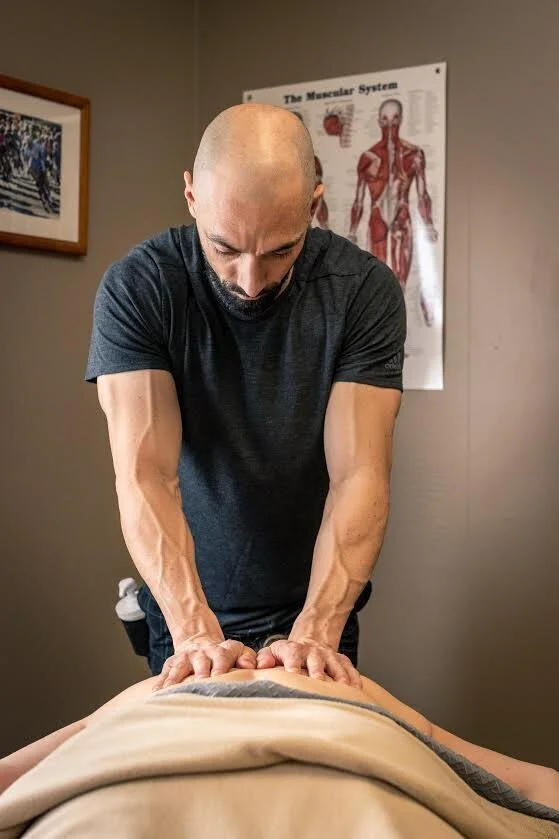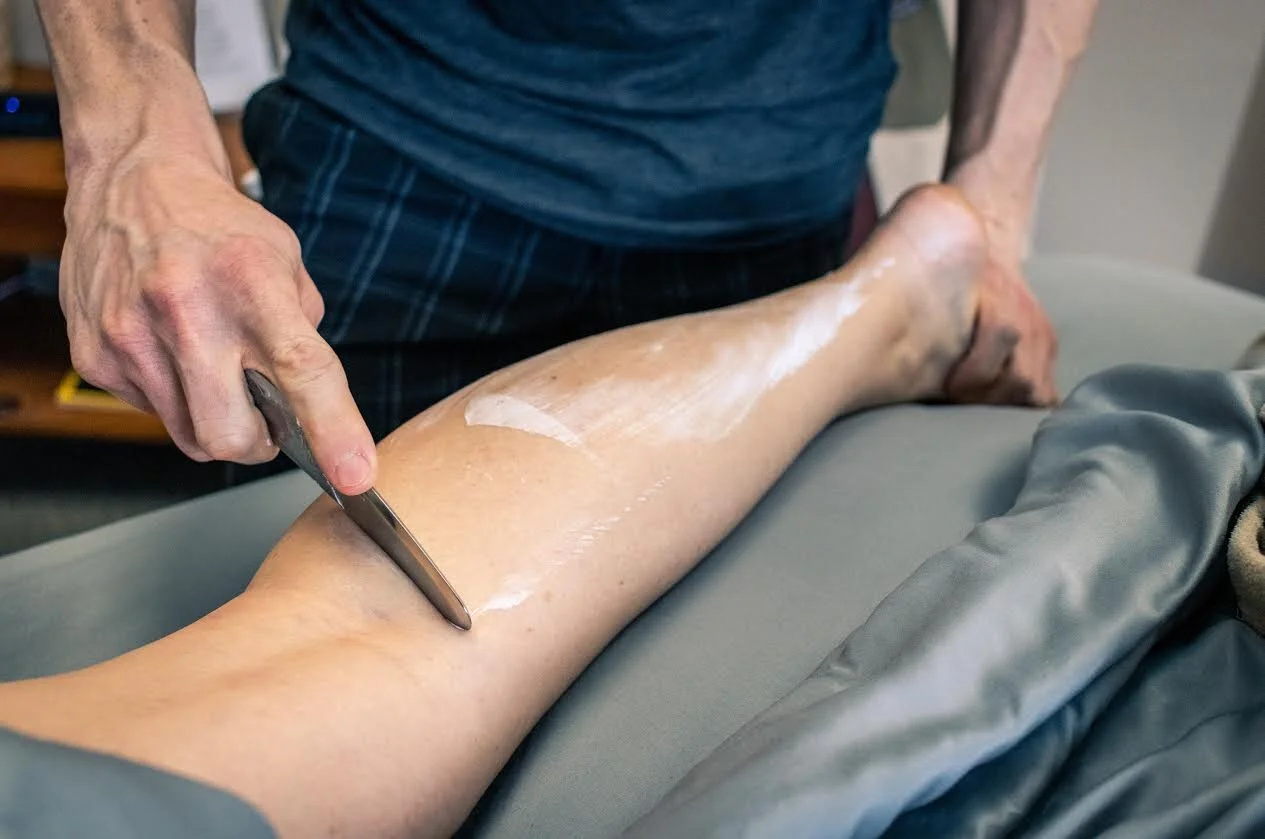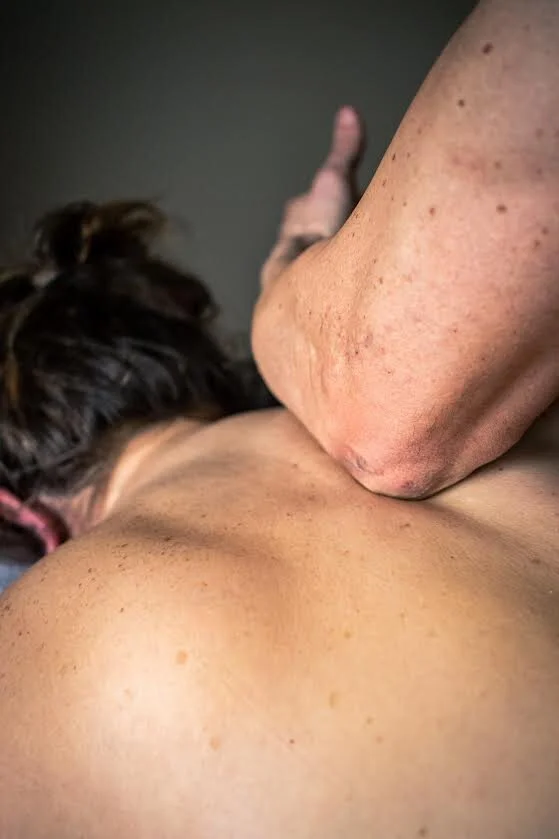MASSAGE Services
Depending on your specific needs, I utilize a variety of the following techniques:
Neuromuscular Therapy
Neuromuscular therapy is a form of soft tissue manipulation that aims to treat underlying causes of chronic pain involving the muscular and nervous systems.
Benefits:
Higher levels of flexibility and strength.
Increased ease and efficiency of movement.
Better posture.
Balanced musculoskeletal and nervous systems.
Improved blood circulation.
Lower levels of body toxins.
What Does Neuromuscular Massage Therapy Treat?
Low back pain
Upper back pain
Carpal tunnel-like symptoms
Sciatica-like symptoms
Plantar fasciitis
Tendonitis
Knee pain
Jaw pain
Tempomandibular joint pain (TMJ disorders)
Hip pain
Headaches
Iliotibial band friction syndrome
Trigger Point Therapy
A trigger point is caused by muscles that fail to relax. This results in a knot or tight band of muscle that can twitch, irritate surrounding nerves and cause pain in other parts of the body. For instance, a trigger point in the lower back could be causing pain in your neck.
Benefits:
Improved posture
Decreased headaches. Trigger point therapy is a proven method to treat headaches that stem from tight upper back and neck
Improved flexibility and range of motion
What does Trigger Point Therapy Treat?
Headaches
Arthritis
Fibromyalgia
Musculoskeletal pain
TMJ
Herniated discs
Sciatica
Sports Massage
Sports massage is geared toward athletes of every kind. It uses deeper, more focused pressure, flushing and stretching.
Benefits:
Improves athletic performance
Increased range of motion
Increases flexibility
Decreased muscle stiffness and soreness after exercise
Prevents injuries
Speeds post- exercise recovery time
Myofascial Release TECHNIQUE
Myofascial release is a soft tissue therapy used to treat deep muscular tension, somatic dysfunction, and pain by relaxing the fascia (the fibrous bands around muscles, ligaments, and tendons). The technique requires very firm pressure that stretches and elongates deep muscle tissue, increasing range of motion and circulation.
Benefits:
Reduce pain.
Release knots/trigger points.
Enhance circulation by breaking up the tight areas where blood flow may become restricted.
Reduce exercise-related soreness.
Corrects muscle imbalances.
Improves joint range of motion and overall flexibility.
Can help alleviate headaches or symptoms of migraines.
Reduced adhesion's and scar tissue (from surgeries or injuries)
Swedish Massage
Swedish massage focuses on muscle relaxation, targeting superficial muscles (rather than the connective tissues targeted in deep-tissue massage) and increasing blood circulation.
Benefits:
Pain management
Increased blood flow
Rehabilitation for muscle injuries
Increased flexibility
Reduced stress
Improved immune system
Cupping Therapy & Dynamic Cupping
The benefits of cupping include local pain relief and muscle relaxation. Cupping improves overall health by removing the energy blockages as barriers to the flow of healthy energy or qi. For athletes, cupping may help increase blood flow to a particular muscle region or help reduce pain.
Benefits:
Stretches tissue by suction
Releases fascial restrictions
Increases blood flow
Breaks up toxins
Increases range of motion
Stimulates lymphatic drainage
Dynamic cupping is a combination of massage movements, joint movements and the negative pressure created by proper use of the cups. The cup is moved by weak suction along the area of muscle that needs a massage.
Instrument Assisted Soft tissue mobilization
Instrument Assisted Soft Tissue Mobilization (IASTM) use of specialized tools to manipulate the skin, myofascia, muscles, and tendons by various direct compressive stroke techniques we use to break down the scar tissue and fascial restrictions in your soft tissues. This includes your muscles, ligaments, tendons, nerves and fascia.
What does IASTM Treat?
Neck pain
Carpal tunnel syndrom
Plantar fascitis
Rotator cuff tendinitis
Patellar tendinitis
Tibialis posterior tendinitis
Heel pain /Achilles tendinitis
Post-surgical and traumatic scars
Myofascial pain and restrictions
Musculoskeletal embalances
Chronic joint swelling associated with sprains/strains
Ligament sprains
Muscle strains
Back pain
Trigger finger
Hip pain (replacements)
IT band syndrome
Shin splints
Chronic ankle sprains
Acute ankle sprains
Scars (surgical, traumatic)











